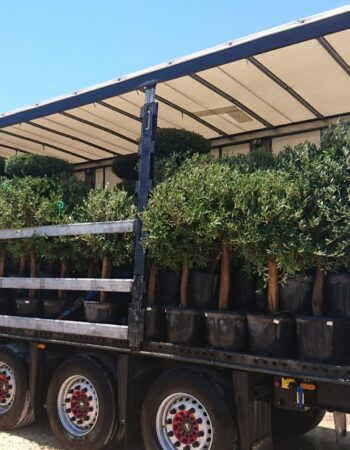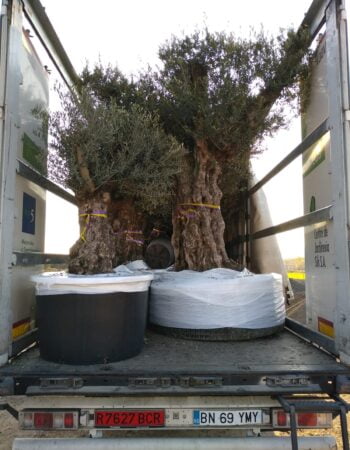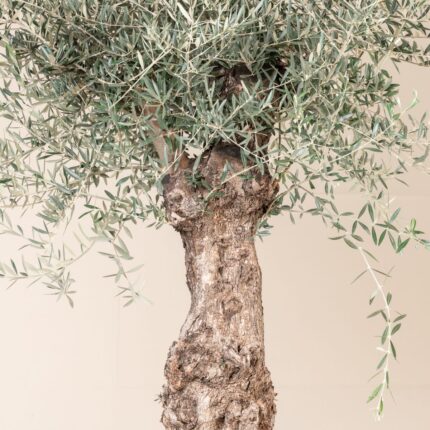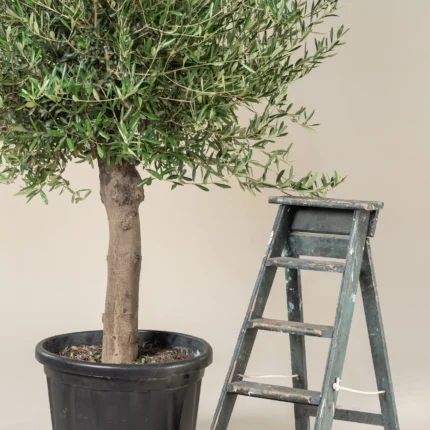Westringia Fruticosa
Westringia fruticosa, commonly known as Coastal Rosemary, is an evergreen shrub native to the coastal regions of Australia. This hardy and versatile plant is known for its dense, rounded form, with soft, gray-green foliage that resembles rosemary. The shrub produces small, delicate white to pale lavender flowers throughout most of the year, often blooming more profusely in spring and summer. Coastal Rosemary is highly valued for its ability to withstand harsh coastal conditions, including salt spray, strong winds, and sandy soils. Its compact size and neat growth habit make it an excellent choice for hedging, borders, and coastal gardens.
Size and packaging guidelines

Fermentum scelerisque hendrerit parturient nullam enim lobortis litora parturient dictumst.
Potenti a quisque tincidunt venenatis adipiscing parturient fermentum nisl tincidunt amentu.
Scelerisque conubia lobortis a condimentum ad eleifend dui integer maecenas habitant nostra.
| Specification | Chair | Armchair | Sofas |
| Height | 37" | 42" | 42" |
| Width | 26.5" | 32.5" | 142" |
| Depth | 19.5" | 22.5" | 24.5" |
| Assembly Required | No | No | Yes |
| Packaging Type | Box | Box | Box |
| Package Weight | 55 lbs. | 64 lbs. | 180 lbs. |
| Packaging Dimensions | 27" x 26" x 39" | 45" x 35" x 24" | 46" x 142" x 25" |
- Botanical Name: Westringia fruticosa
- Common Name: Coastal Rosemary
- Mature Height: 3-6 feet (0.9-1.8 meters)
- Mature Spread: 3-6 feet (0.9-1.8 meters)
- Growth Rate: Moderate
- Light Requirements: Full sun to partial shade
- Soil Requirements: Well-draining soil; tolerant of sandy, loamy, and even rocky soils
- Water Needs: Low to moderate; drought-tolerant once established
- Foliage: Evergreen, soft, narrow gray-green leaves, resembling rosemary
- Flowers: Small, white to pale lavender, tubular flowers; blooms year-round with peaks in spring and summer
Uses:
- Hedges and Borders: Ideal for creating low to medium-sized hedges, edging pathways, or defining garden borders.
- Coastal Gardens: Perfect for coastal landscapes due to its high tolerance for salt spray, wind, and sandy soils.
- Rock Gardens: Its compact growth habit and drought tolerance make it well-suited for rock gardens or xeriscaping.
- Containers: Can be grown in containers on patios or balconies, adding texture and color to small spaces.
- Mixed Shrub Plantings: Complements other drought-tolerant shrubs and perennials in mixed borders or Mediterranean-style gardens.
Benefits:
- Drought Tolerance: Once established, Westringia fruticosa requires minimal water, making it ideal for water-wise gardens.
- Salt and Wind Resistance: Thrives in coastal conditions, tolerating salt spray and strong winds without damage.
- Low Maintenance: Requires little care beyond occasional pruning, making it a great choice for low-maintenance landscapes.
- Year-Round Interest: Evergreen foliage and year-round flowering provide consistent color and texture in the garden.
- Versatility: Suitable for a variety of garden styles, including coastal, Mediterranean, and modern minimalist designs.
Westringia fruticosa, or Coastal Rosemary, is a resilient and attractive shrub that brings beauty and practicality to any garden. Its adaptability to tough coastal conditions, low maintenance needs, and year-round appeal make it a favorite for gardeners seeking a reliable and versatile plant. Whether used as a hedge, in rock gardens, or as part of a mixed border, Coastal Rosemary is a valuable addition to the landscape.
Debes acceder para publicar una valoración.


CAREFUL TREE TRANSPORTATION
At Treezom, we take great care in transporting your trees to ensure they arrive in perfect condition. Our expert team uses various methods, depending on the size and volume of the order, to provide safe and efficient delivery. Whether you're ordering a single tree or a bulk order, we guarantee high standards of handling and care throughout the process.
MULTIPLE SHIPPING METHODS
- Truck Delivery: Ideal for local or regional deliveries, ensuring a smooth and timely shipment of your trees directly to your location.
- Sea Containers (20’ or 40’): Perfect for larger orders or international shipping. Our sea containers are equipped to handle bulk shipments with optimal protection.
- Other Customized Solutions: Depending on the size and nature of your order, we can offer tailored shipping methods to meet your specific needs.
No matter the shipping method, we use specialized packaging and handling procedures to protect the trees during transit, ensuring they arrive healthy and ready for planting.
Below, you’ll find key tips tailored to this species’ requirements. Whether you’re new to plant care or have plenty of experience, these guidelines are here to support you in keeping your green companion healthy and vibrant.
- Planting:
- Choose a location with full sun to partial shade and well-draining soil.
- Dig a hole twice the width of the root ball and equal in depth.
- Place the plant in the hole, backfill with soil, and water thoroughly.
- Mulch around the base to retain moisture and suppress weeds.
- Watering:
- Water regularly during the first growing season to establish roots.
- Once established, water sparingly; Coastal Rosemary is drought-tolerant and prefers to dry out between waterings.
- Overwatering should be avoided, especially in clay soils, to prevent root rot.
- Pruning:
- Prune lightly after flowering to maintain shape and encourage bushier growth.
- Coastal Rosemary can be pruned more heavily to create formal hedges or topiaries.
- Pruning can be done at any time of year, though spring is ideal for shaping.
- Fertilizing:
- Coastal Rosemary typically requires little to no fertilization.
- If desired, a light application of a balanced, slow-release fertilizer in spring can promote healthy growth.
- Avoid over-fertilizing, as this can lead to leggy growth and reduced flowering.
- Pest and Disease Control:
- Westringia fruticosa is generally pest and disease-resistant.
- Monitor for common garden pests like aphids or scale, and treat with insecticidal soap if necessary.
- Good air circulation and well-draining soil will help prevent any potential fungal issues.
*This information is provided for informational purposes only. For more detailed care, please consult a professional Gardener or Arborist.


 SINGLE TREE
SINGLE TREE OUTDOOR POTS
OUTDOOR POTS




















 Single Tree
Single Tree
Valoraciones
No hay valoraciones aún.